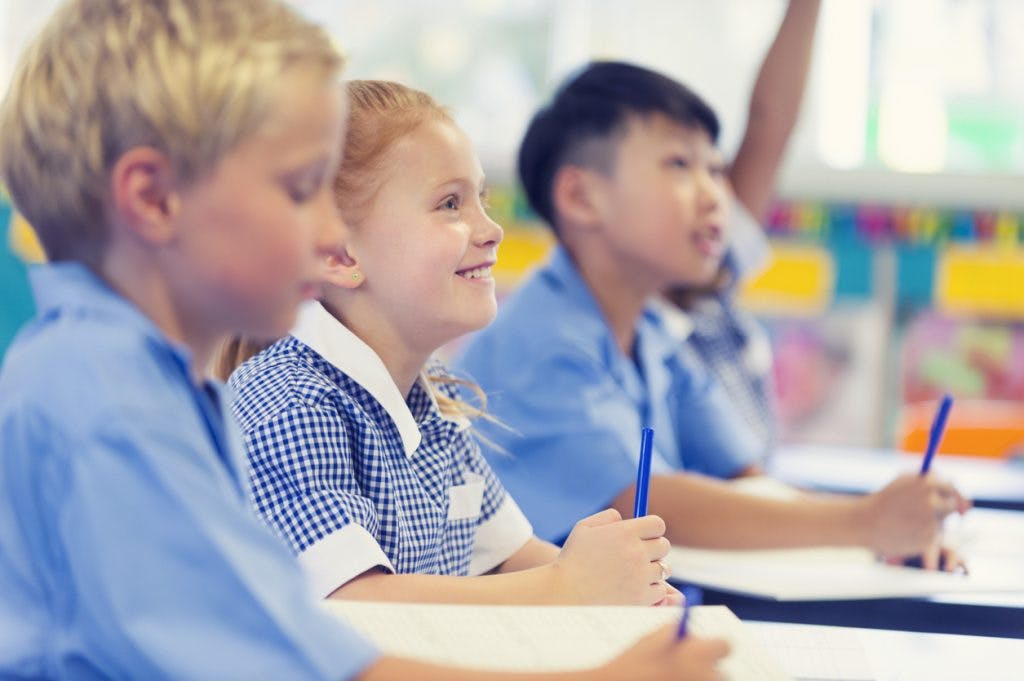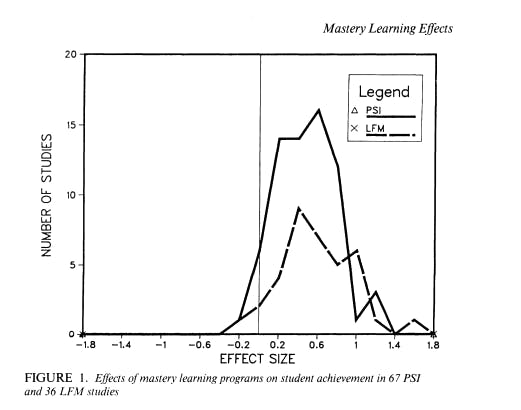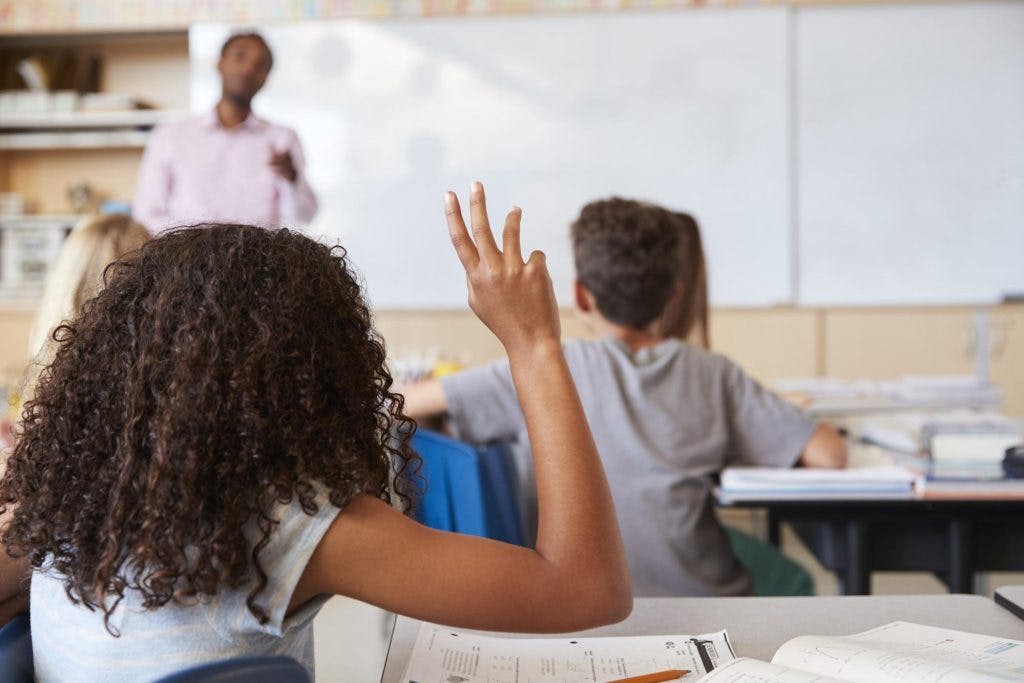How Mastery Learning Helps Every Student Succeed
All Posts
Mastery learning ensures that every student reaches mastery in a unit before moving on — boosting achievement and building lifelong learners.
22,373 students — minimum— have participated in mastery learning studies since 1968.
The average student in a mastery learning classroom achieves the same level as the top 15% of students in a classroom not using mastery learning.
90% of mastery learning studies have shown positive results.
Key takeaways:
- Mastery learning ensures students obtain mastery in a given topic before moving on to the next unit. It assumes any student can reach high levels of achievement given sufficient instruction, time and perseverance.
- Bloom’s Learning for Mastery (1968) and Keller’s Personalized System of Instruction (1968) both emphasized that while learning is linked to factors like student aptitude and quality of instruction, students can achieve mastery if they are allowed to learn the material at their own pace.
- Over 50 years of research proves that mastery-based learning is linked with higher student achievement rates and positive student attitudes towards particular subjects when started at a young age.
- Teaching for mastery encourages lifelong learning. When students are given time to learn and succeed, they’re more likely to value perseverance, have confidence in their skills and understand their own learning needs.
How do students learn best? Common answers include access to well-trained teachers, effective curricula, supportive classroom environments, or even just natural skill.
But what about time?
Imagine a third grade student. She’s flown through all of her math work so far, but struggles when fractions are introduced and the rest of the class moves on before she completely understands. This learning gap means she has difficulty multiplying and dividing fractions, and struggles with quadratic equations in high school.
The result? She hates math.
What is mastery learning?

Mastery learning focuses on ensuring a student’s grasp of a given concept is complete regardless of the time and resources needed to achieve mastery, or total understanding.
“Our basic task in education is to find strategies which will take individual differences into consideration but which will do so in such a way as to promote the fullest development of the individual.” Benjamin Bloom, 1968
In traditional teaching methods, the class learns together and moves on to the next unit when most of the students have achieved mastery. Students who can’t keep up are more likely to develop learning gaps that grow as they tackle more difficult material.
In the 1960s, educational psychologist Benjamin Bloom theorized that with a mastery learning model, students could master any kind of content if they were given the right environment and classroom support. According to Bloom’s Learning for Mastery, mastery learning depends on five key variables: aptitude for kinds of learning, quality of instruction, ability to understand instruction, perseverence and time allowed for learning.
This approach to learning moves beyond the idea of student aptitude— the natural ability to do a given task or learn a specific subject — and insists that every student is capable of achieving mastery under the right conditions.
How mastery learning changed teaching
For all students to achieve mastery, classroom instruction had to be re-imagined. Bloom and psychologist Fred Keller developed two unique, but similar, programs in 1968 designed to achieve student mastery.
Bloom's Learning for Mastery
In a traditional classroom, the teacher delivers the unit to students over the course of a few days or weeks, sets a formative assessment to measure student comprehension and moves on once it’s complete. At the end of the year, a summative exam measures overall achievement.
Since this system is time-bound and doesn’t account for students who have not achieved mastery in a given topic, Bloom proposed three changes:
- An additional assessment given during the unit to serve as a final assessment if students had achieved mastery, and a diagnostic test if they had not.
- Students who had not achieved mastery could be re-taught and given intervention until they reach mastery.
- Student who had already reached mastery could move on to more advanced work and enrichment opportunities. Then, they would take the assessment again.
With this system, educators could be relatively certain there were no learning gaps that might lead to problems later on.

As educational research Thomas Guskey puts it:
“In mastery learning, assessments are not a one-shot, do-or-die experience; instead, they are part of an ongoing effort to help students learn.” Thomas Guskey, 2010
But wouldn’t this method of instruction take longer? Bloom (and many researchers after him) theorized instruction would gradually speed up because students would have a more thorough understanding of prerequisite skills.
Keller's Personalized System of Instruction
Similar to Bloom’s Learning for Mastery, Keller also proposed his Personalized System of Instruction (PSI) in 1968, which centered around five key principles:
- Students should work through the course at their own pace.
- Unit tests must be completed with a high degree of accuracy (usually 9 out of 10) before students can move on to the next topic.
- Lectures are “vehicles of motivation,” not sources of critical information.
- Teachers and students use written communication in textbooks and study guides.
- Proctors bridge the gap between students and instructors through “repeated testing, immediate scoring, almost unavoidable tutoring, and a marked enhancement of the personal-social aspect of the educational process.”
Does mastery learning work?
Between 1968 and 1982, there were at least 1000 articles and publications that tested different approaches to mastery learning.
The results?
Out of 279 studies completed, 90% of them showed mastery learning works in a classroom setting. As a part of these studies, a minimum of 22,373 students were sampled from kindergarten to college.

Source: Kulik et. al (1990)
Two notable studies also found that the average student in a mastery learning classroom achieves the same level as the top 15% of students in a classroom not using mastery learning.
Overall, hundreds of studies in the past 50 years have demonstrated that a mastery learning model can:
- Boost achievement levels
- Improve students’ attitudes towards learning
- Give students more confidence when they’re learning new concepts
Mastery learning in Missouri
Most researchers agree that implementing mastery learning or PSI will have positive effects — especially for weaker, special needs and at-risk students. Here’s what mastery learning looks like in the classroom:
Where?
As part of a key study in 1990, researchers decided to study the impact mastery learning could have on mainstreamed special education students in a Missouri elementary school.
Who?
40 students considered to be mildly disabled or at-risk were put into regular classroom instruction.
How?
The teacher taught the lesson and then administered a formative assessment. Students who didn’t receive between 80% and 90% worked with a special education teacher in the classroom to correct, intervene and re-teach. Students who achieved mastery continued to work with the classroom teacher on enrichment activities.
Results?
Researchers divided students into five groups, based on data from the Missouri Mastery Achievement Test (MMAT). Before the new program was introduced, 40% of students were in the two lowest groups. After only two years of mastery learning, just 10% were in the bottom two groups, and student’s MMAT scores increased by 13.46% overall.
Relevant research also overwhelmingly suggests teaching for mastery can help students love learning. And the younger the better — applying mastery learning in early elementary classrooms can lead to lifelong learning gains.
Mastery learning in 2019

Today, mastery learning can impact all areas of a student’s classroom experience — not just academics. When students are given time to learn and succeed, they’re more likely to value perseverance, have confidence in their skills and understand their own learning needs.
“Mastery learning can give zest to school learning and can develop a lifelong interest in learning. It is this continual learning which should be the major goal of the educational system.” Benjamin Bloom, 1968
New technology and teaching strategies have also made it even easier to implement mastery learning in the classroom and build lifelong learners.
- EdTech tools allow teachers to easily differentiate learning, deliver formative assessments, give student feedback and organize their classrooms so every student can achieve mastery.
- Blended learning models encourage students to take responsibility for their own learning and give them the opportunity to work through prerequisite skills and essential concepts at their own pace, demonstrating mastery of a concept before moving on.
Personalized learning strategies recognize the individual needs of each student and develop unique learning plans to help every student achieve mastery.
How Prodigy promotes mastery learning
At Prodigy, we believe student engagement and their attitude towards math is vital to a student’s ability to learn. That’s why we’ve created an engaging world for students to explore while they practice key math skills.
Our game-based, adaptive platform doesn’t include time bound elements, so students have the flexibility and freedom to reach mastery in any given topic. Our adaptive algorithm finds and fills learning gaps, and encourages students to move through the game at their own pace. In-game incentives and badges encourage perseverance and reward hard work.
When you provide students with a strategy and environment to suit their individual needs, there’s no telling what they can accomplish.
[Want to know more about mastery learning? Read the full Literature Review here.]
What could mastery learning look like in your school?
Want an EdTech tool that supports mastery learning?
Try Prodigy — the curriculum-aligned math platform used by more than 100 million teachers, students and parents around the globe.



